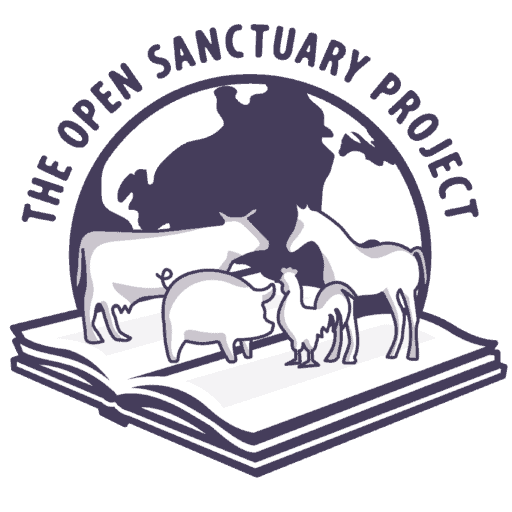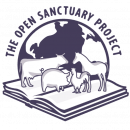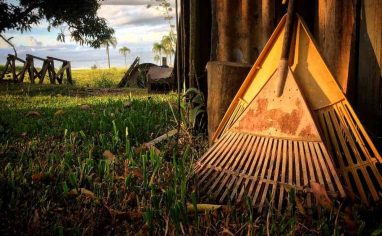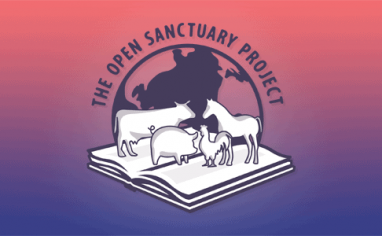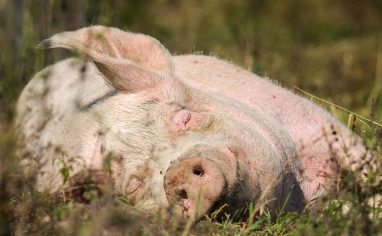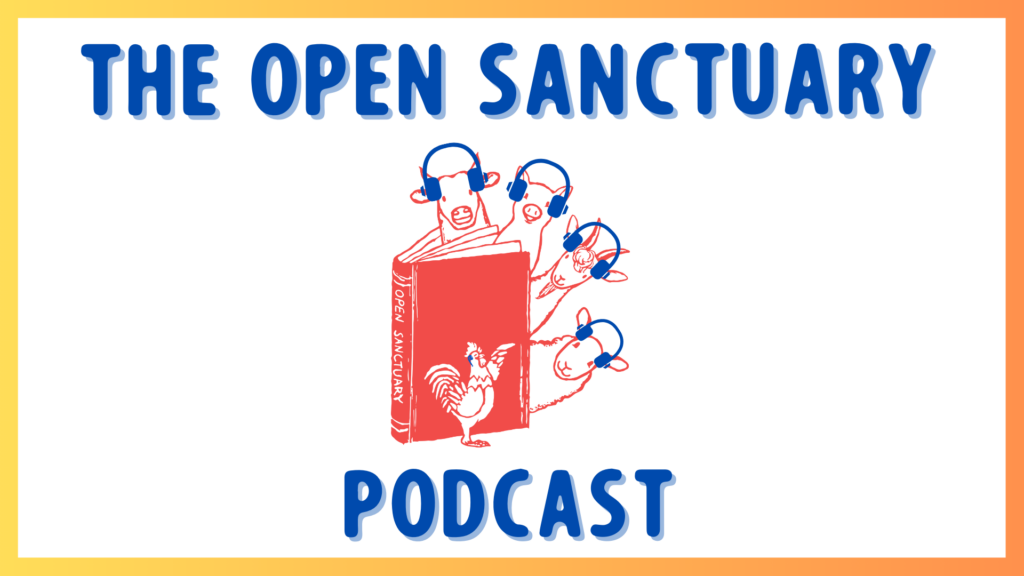
Subscribe To The Open Sanctuary Podcast
If you’d like to get the latest episodes of The Open Sanctuary Podcast, you can subscribe for free on all Podcast platforms, including Apple Podcasts and Spotify!
Episode Notes
Executive DirectorThe individual formally in charge of final decision making at an organization, who sometimes works closely with the organization’s Board of Directors. Sometimes a Founder is an Executive Director, especially early in a nonprofit’s growth stages. Mckenzee Griffler, Community Education Specialist Andie Springirth, and NonprofitA non-governmental organization whose primary purpose is something other than selling goods or services. Specialist Julia Magnus delve into the question of missionThe stated goals and activities of an organization. An animal sanctuary’s mission is commonly focused on objectives such as animal rescue and public advocacy. and vision statements. Why are these two simple sentences so important for the internal operations of animal organizations, both grassroots and nonprofit? How do they help your organization interact with the community more collaboratively and productively? And how do you integrate both your internal and external community into crafting mission and vision statements thoughtfully? Listen to this episode to learn more about this important topic for animal sanctuaries and rescues!
—
This Episode’s Referenced Open Sanctuary Project Resources:
- Understanding Mission And Vision Statements For Your Animal Organization
- Weighing The Costs And Benefits Of Nonprofit Status
- Conflict Support For Your Animal Organization: Understanding Dominant Culture, How It Shapes Our Behaviours, And Envisioning Alternatives
- Conflict Support For Your Animal Organization: Building Transformative Relationships And Tools For Challenging Dominant Culture In Everyday Interactions
- Managing Requests to Take In and Help an Animal Outside the Scope of Your Sanctuary’s Mission
- Strategic Planning for Educational Programming at Your Animal Sanctuary
- In-Person Sanctuary Educational Programming: What Are Your Options?
- Virtual Sanctuary Educational Programming: What Are Your Options?
Episode Transcript (Auto-GeneratedThe following content was transcribed through an automated process and may contain transcription errors or misspellings.)
Julia Magnus: Greetings, Sanctuary friends and family. We are back with the Open Sanctuary podcast and today we are talking about mission and vision. In our first podcast on governance, we discussed the costs and benefits of starting a nonprofit and we also touched somewhat on mission and vision. And at that time we talked about how important it is for any organization, whether they are grassroots or nonprofit, to develop a mission and vision statement. So, in this episode, we’re going to delve a little bit further into that. We’re going to talk about what they are, why are they important, how do you develop them, and how can they help you guide the day-to-day work of your organization? So, why don’t we start by a quick definition of what mission and vision statements are? So, a mission statement essentially is a single sentence that articulates why your organization exists and the specific need that you want to address. So, if you want to think about a hypothetical, if you’re a rabbitUnless explicitly mentioned, we are referring to domesticated rabbit breeds, not wild rabbits, who may have unique needs not covered by this resource. rescue in the hypothetical town of Zenith, your mission statement might be to address the needs of unwanted and abandoned rabbitsUnless explicitly mentioned, we are referring to domesticated rabbit breeds, not wild rabbits, who may have unique needs not covered by this resource.. Vision statements are a single sentence that is aspirational and it looks forward and describes the ideal state that your organization wants to achieve. So, if you’re talking about that same hypothetical rabbit rescue organization, it might be a world in which all Zenith’s rabbits are safe, well cared for, something like that. So, that’s a very simple, fake articulation of what those are. Mckenzee, we can get a little bit more concrete. You are the Executive Director and founding staff member of the Open Sanctuary Project. When you started out, how did you think about mission and vision, and how did you go about developing our mission and vision statements? And maybe you can share ours as an example?
Mckenzee Griffler: Yeah, that’s a great question. You know, I had never developed a mission and vision statement before, and I think it took me a while for me to wrap my head around what the takeaway purpose was. I think so often when we’re talking about nonprofit things, and we’re really focused on the day-to-day programming and like what are we doing, the more lofty goals and strategic planning and like getting really granular about that stuff, I think sometimes it feels like a silly extra that, like, “oh, we don’t need to do that. We just need to like do our jobs.” And I think what I learned talking to a lot of nonprofit specialists and also just reflecting on it was without a really clear and specific mission and vision statement, it’s really hard to figure out what you’re doing or why sometimes. And like, yes, there are immediate needs, but also there are a lot of immediate needs in the world. And so what is it that our organization does? Not every organization, not everything we want to see in the world, but what do we want to see our organization do in the world? So, I tried to get really specific, which was hard for me because I think a lot of organizations that care about animals want a really beautiful, broad future for animals. And so we wanted to be like, “a world where no animal is harmed.” True. I think we all want that. But I had to realize that what we’re doing at the Open Sanctuary Project, that’s not what specifically the Open Sanctuary Project does. We’re part of a wider world. So for that reason, we got pretty granular, I think, with our mission and vision statements, and it might be time to reassess them with the staff at some point because we’re now like seven years down the line. But I think they’re pretty good. So our mission statement is: The Open Sanctuary Project’s mission is to provide reliable, actionable knowledge to sanctuaries and individuals who want to be of service to farmed animalsA species or specific breed of animal that is raised by humans for the use of their bodies or what comes from their bodies.. And I tried to make every word count. I think when we were developing it, we really wanted to be like, “this is exactly what we are doing.” So that when somebody asks what we do, which happens often, especially people outside of the rescue world ask what we do, I wanted to be able to have something to be like, “well, what we’re doing, every decision we make, every meeting that we hold, every time that a staff member is questioned, we can look back at the mission and be like, well, does this serve this purpose?” And we provide reliable but also actionable knowledge. So, it has to be both of those things. It has to be something that sanctuaries and rescues can trust, but it also has to be something that they can do something with. Because when I started the Open Sanctuary Project, I wanted there to be information that people could do something with. Because if it’s just kind of there, it can be really hard to figure out how to actually apply it and make the lives of animals better or the lives of your staff better. And then the second half is very simple. It’s not a very complicated mission statement: “and provide reliable actionable knowledge to sanctuaries and individuals who want to be of service to farmed animals.” And it explains who we’re doing it for. We’re doing it for people who run sanctuaries, people who work at rescues, people who just want to help, people who don’t use a framework calling anything sanctuary or rescue, but they still want to be helpful, to be of service to farmed animals. And our vision statement, thinking back to what you were saying, Julia, that it’s kind of like what is the idealized outcome that happens because your organization is doing the best stuff that it can. Our vision statement took a little bit longer to figure out because it’s, you know, going back to that thought that it’s something that needs to be specific to our organization and what we’re trying to do and not just like the entire outcome of the world. So our vision statement currently is: The Open Sanctuary Project’s vision is of a world where every farmed animal sanctuaryAn animal sanctuary that primarily cares for rescued animals that were farmed by humans. is a success story, because that’s what we’re trying to get at. We’re trying to make a world where the rescue and care of animals in need, specifically farmed animals. Although, you know, I think we all dream in the future of expanding our resource pool beyond farmed animals, but the need is so specifically acute with farmed animals. So, we just want to make sanctuaries successful and that would be wonderful and that is what we’re really trying to work towards via our mission.
Julia Magnus: I’m almost in tears. Sorry. Because I do love, I do feel like this is the ethos that inspires our Andie Springirth, who’s our community education specialist, and she’s an educator. She’s worked for multiple nonprofit organizations in those contexts. You’ve worked with various different mission and vision statements. You may have helped develop them in different ways. I’m curious for you how you felt mission and vision statements did or did not impact your day-to-day work, your relationship with your organization, your relationship with the external public. Tell me a little bit more about that.
Andie Springirth: Yeah, that’s a great question, Julia. So, I think in one of the resources I’m struggling to remember the name of it that I wrote for the Open Sanctuary Project, I discussed the idea that your mission and vision really is the compass with which you base your decisions off of in your organization. And, you know, from an educational standpoint and really from any realm within your organization, I think that this has a lot of benefits in terms of how you view your work. And so what this allows you to do is it allows you to be approached by either an idea or another organization or a person, you know, and to really think about, well, okay, is this something that I should say yes to based on what my mission and vision are? Or, on the flip side, it allows you to also be able to say no more confidently and comfortably. There are lots of other organizations I’ve worked with. But just to go back to what Mckenzee was saying in terms of the Open Sanctuary Project, I utilize this framework every day actually in the decisions I make on a weekly basis. So, you know, as a team and as an individual that focuses on education, I come across ideas or proposals for collaborations all the time, and I think about what that mission and vision is here and I think to myself, “okay, hmm, yeah, that really aligns well with what we’re doing here. I’m going to put that on the docket, you know, on my list of things,” or maybe I’m going to address it right away. It also allows me to think about a proposal for an idea or particular project and go, “hmm, you know, this is a really interesting thing to think about, really interesting topic. I’m not going to say no entirely, but this might be something that we can discuss and explore more further down the road as we evolve,” because, you know, as is mentioned in the resource, Julia, that you wrote on mission and vision for animal organizations, they do evolve and probably should over time, right, as we change and grow. But it also allows me to look at a potential idea or topic and be like, “that’s a really cool idea, but this isn’t for us,” and kind of move on. So, again, I think that it’s been immensely helpful for me here and in my past work just in terms of making regular decisions about things that I think would be useful and helpful and beneficial for the folks that, our constituency, that we’re working for.
Andie Springirth: So, here’s a question for you, Julia.
Julia Magnus: Yeah, you know, Open Sanctuary, we obviously have a different bent than, I’d say, a lot of our audience does in terms of mission because we don’t have a physical sanctuary and we don’t conduct rescues. So, what do you think the elements of a sanctuary who might be listening or a micro sanctuary about getting specific with their mission and vision, and why might that look different than a different sanctuary’s? I think that with the question of how you develop your mission and vision statement, it has to do with positioning in your community. It has to do with being in touch with community. What are the needs? The specific needs that are unmet in your community. If you are the rabbit rescue that we’re talking about earlier, if you’re developing your mission and vision and you’re looking at rescuing rabbits, do you want to narrow it in a way that you want to limit it to rabbits or do you want to also maybe include other smaller mammals if those needs are unmet? Do you have capacity within your organization to do so? It feels like in a rescue or sanctuary context, you might want to get a little bit more specific, like the Open Sanctuary Project. We’re creating resources. We’re creating like an encyclopedia essentially. We don’t do direct care or rescue, but for those who do, you want to get specific because it’s going to impact your day-to-day work. It feels to me like mission and vision statements should be something that everyone who’s either a volunteer or staff member at your nonprofit or grassroots organization should have in their mind at any given point when they’re making decisions, either about intakes, care, or any other day-to-day decision that is going to have a direct impact on lives. So, it feels like something that needs to be fed into by both the folks that you’re working with, everyone who’s part of the organization, as well as there should be input from the larger community, as well as other rescue groups that you may or may not collaborate with or exist alongside. So, that kind of like when you developed mission and vision for OSP, it was a totally new concept. It was a totally different thing. But there are a lot of folks who are developing mission and vision statements in a rescue or sanctuary context who do exist alongside other organizations in their community who do similar adjacent work. So it kind of brings me to another question which I’m going to throw back, which is, how do you feel like it is best to gather input both from within the organization from the community to help craft these statements to make them both actionable and reasonable and also sufficiently visionary to inspire the folks who work with you?
Andie Springirth: Yeah, I love this question because I feel very passionate that this process should be community-oriented and that your team and your organization should all feel a sense of community ownership and engagement in it. I’ve read about lots of really interesting ways that teams can go about developing this together and creating this together. Some of them are very fun and exciting, which I’m happy to share here. I once read several years ago that a vision can be thought of as a destination, but it can also be thought of as a way of being in the world, and that just gave me all the butterflies and the good. And, you know, that the mission is the vehicle with which you can achieve that, right? And so one of the ways that I’ve read folks do this creatively is by gathering everyone together and brainstorming, making this in part a visual process, which I think is great. In terms of vision, I’ve heard folks who allow team members to actually draw their vision with markers and crayons and colored pencils and then put it on the wall and then they can kind of articulate the patterns that they see together, which I think is fascinating and wonderful. Also, one of the most interesting ways I’ve heard of teams coming together to develop a vision and mission together is by participating in a, what did they call it? It was a visionary fiction, like headlines. Okay. So, like, yes, like a newspaper headline of a fictional future, right? Kind of a sci-fi fantasy take on this, which, you know, may not be everyone’s thing or cup of tea, but for me, I thought this was a really, really wonderful way to get folks engaged in this in a creative and fun way. But I also want to say this process, like I know other teams who’ve actually, this is not always feasible for everybody, though it doesn’t have to be offsite or anything. They host retreats together to participate in this process, which I think is another really fun way to get folks involved and brainstorm. And then, of course, I think part of doing this process as a community really, it also means that you have to do regular check-ins with folks as you’re going through it, making sure that everybody feels aligned and that there’s a general consensus on what you’re coming up with. And then after this process is, let’s say, over, you know, it’s really not over. I just want to add in here and emphasize to the folks who are listening that we mentioned early on the resource, this is something that does and probably should evolve as your organization and team evolves. And so it’s really important that you do probably annual check-ins about this, maybe even more frequently depending on your organization, and you modify, and again, check in with everyone to make sure that everyone’s aligned with this, but I feel really strongly that this should be a community-based process and that it can be fun. You know, it can be really practical, but it can also be creative and fun. And I think oftentimes some of the best mission and visions that I’ve seen that really resonate with me and that really give me a sense of what someone or an organization is doing, they come from this kind of process. So,
Mckenzee Griffler: Yeah, I love all of that. It makes me feel really inspired to go back in with all of us at Open Sanctuary and take a look at our mission and vision and just make sure that we’re on the same page with it. You know, just thinking for our little organization, I could envision our next iteration of this mission and vision. You know, maybe we start by looking at it as a team, brainstorming alternatives, you know, just talking about what if we took a completely different approach to this or, like, is this something that feels perfect or are there some little tiny tweaks that we could do that just make it a bit more specific or update it a little bit more? You know, maybe our vision we decide we want to change up. And I think from there, my sense would be that we would probably go to trusted volunteers and community members that support us, that understand what we do and what we don’t do, and say, “Hey, does this from an outsider’s perspective, that you know us and we trust you, does this seem like what we’re doing?” And if it doesn’t, where’s that disconnect happening? Like they might say, “Yeah, you know, I see this, but really what I get out of Open Sanctuary and what I see Open Sanctuary doing is really this angle.” And I think it’s really important to get that input from those that you’re serving, your community, and your stakeholders because sometimes we can get really in our head and in process, and then if we’re not getting that feedback, we might be missing really valuable information. And being that Open Sanctuary is a relatively transparent organization, I would say I could even see us getting towards a final draft and putting it out there for the wider audience, even in like a newsletter ask or even a social media post, and just be like, “Hey, we’re thinking of updating our mission and vision statement. Here’s what it is now. Here’s what we’re thinking of putting it to. What do you all think of this?” And see what they say. Because, you know, ultimately our work is in service of you, the person who’s listening to this podcast or whoever reads our newsletter or is desperately looking up goat health checks on Google and finds us, like that’s also our audience. So, we want to make sure that we’re actually reflecting the realities of the work that we’re doing in our mission and vision statement, but also the other way that we are also doing what our mission and vision statement currently says that we do. Just as a really simple philosophical check and balance on the work that we’re doing to make sure that we’re not drifting really far away from what we said that we were going to be doing, which can be very easy in any work with animals.
Julia Magnus: Yeah, it feels like they’re both, you know, when we’re considering community input, it’s both internal community within the organization, which I think Andie, you were kind of addressing. And then Mckenzee, you started addressing the question of involving external community outside of your organization. And both are equally important when it comes to mission and vision. Both when it comes internally, you’re centering the lives of the animals in your care and creating a shared community culture and ethic. You’re inspiring your staff. You’re giving them a rallying cry, giving them a stake and say in your work as you work together to develop your mission and vision and make it fun. Like Andie said, you keep your board and administrative staff attuned to your organization’s goals and needs. And then externally, you’re working on long-term strategic planning with the community. You’re promoting your organization’s theory of change to your community. You’re giving them something tangible they can identify you by and understand you easily with, and you can inspire them with that and also quickly identify folks who your aspirations appeal to. That can be funders, that can be collaborators, it can be other organizations, it can be any number of folks outside your organization. So, mission and vision are not just some simple, easy, single-sentence things that are just throwaways. They have real, real impacts. So in our resource on this, because it does seem like kind of an abstract subject to many, we do have multiple hypotheticals that show how these two simple sentences can impact your work. And also, as Andie emphasized, these things should evolve over time based on either external feedback from the community outside your organization or internal feedback from folks within your community. So, these hypotheticals can help you ground the theory into the practice. So, Andie, you got thoughts?
Andie Springirth: I just, something popped up as you were talking, Julia, and also as Mckenzee was mentioning external, involving external and internal stakeholders. And I just wanted to mention this before I forget that I was mentioning earlier that your mission and vision can really be utilized as a compass to guide your decision-making. And I know that when we oftentimes in this field in animal care and rescue, when we think about that, we tend to just focus on our decisions revolving around care and rescue. But I also want to emphasize that your mission and vision also should and can, excuse me, have a direct impact and guide the decisions you make internally, like as a team, right? So, I think that can help guide people too in terms of what they come up with in brainstorm in terms of their values and intentions of how they want to be in the world and the way in which they want to get there to do that. So, to get more concrete, I mean things like your mission and vision can even help guide decisions in terms of how you support staff through conflict, right? Communication, in terms of how you hire people and train people. Like these are all things that that mission and vision can really have an impact on internally. I’m just saying this because I think that can help. You want to get granular and also you want to be mindful that this isn’t just what you do to impact others, but to impact yourself internally too.
Julia Magnus: Yeah, definitely. It feels like fundamental basics of community agreements that are a foundation of communications within an organization. So, yeah, along those lines we have somewhat related, it’s not exactly on the subject, but we do have resources on, I would say, I mean generally lump them under conflict support. These are drafted by an independent contractor who is specialized in the work of transformative justice, and they discuss how you can create community agreements. You can work on your one-on-one communications. Having mission vision as a center to that is an anchor point for all community agreements, and it can really help with all of those issues. So, yeah, thank you for raising that, Andie.
Andie Springirth: Yeah.
Mckenzee Griffler: Yeah, because I mean if we tie that back to OSP’s vision, right, that for every sanctuary to be a success story, of course, in order for that to happen, it’s not just animal care, it’s also caring for the staff as well. So, you know, when we brainstorm different topics that we want to cover for animal sanctuaries and provide information that we want to provide to animal sanctuaries, that’s a really important one is how we can help sanctuaries support their staff and themselves through these kinds of processes and practices.
Julia Magnus: Okay. Well, it feels like that was a pretty great discussion of mission and vision, the wider implications of these two very simple sentences. If you want to find the resource on mission and vision, you can go to the opensanctuary.org. You can search mission vision. You’ll find that resource. There’s tons more information in there on mission and vision, as well as many links to sample statements. There are hypotheticals that run you through all kinds of different scenarios and how mission and vision can play out. You also find our conflict support resources on there if you just search conflict support. So, I want to say thank you very much to Andie Springirth, the community education specialist, Mckenzee Griffler, our Executive Director and founding staff member, and thank you so much for spending time with us today and listening to us about mission and vision. We hope this helps inspire you to revisit your mission and vision statements. Don’t be afraid to revise them if you feel they need updating. And feel free to reach out to us at any time if you need any help or advice on this question.
Mckenzee Griffler: Yeah. And if this podcast episode is really helpful and informative to you, please consider sharing it with your community members or anybody doing this work. It doesn’t necessarily even have to be sanctuaries because I’m sure y’all know a lot of other people in other nonprofit fields, and we all need to have clarity about the work that we’re doing so that we can do it as effectively as possible. And, you know, we’re just getting started with the Open Sanctuary podcast, but if y’all have any topic ideas or questions that you’d like us to address in a podcast, please feel free to reach out to us via the contact form on our website opensanctuary.org/contact. And if this is really wonderful, also consider making a donation to the Open Sanctuary Project. We are a 501(c)(3) nonprofit, and your support allows us to continue with creating programming like the Open Sanctuary podcast and everything else that we do. Just a nice little plug.
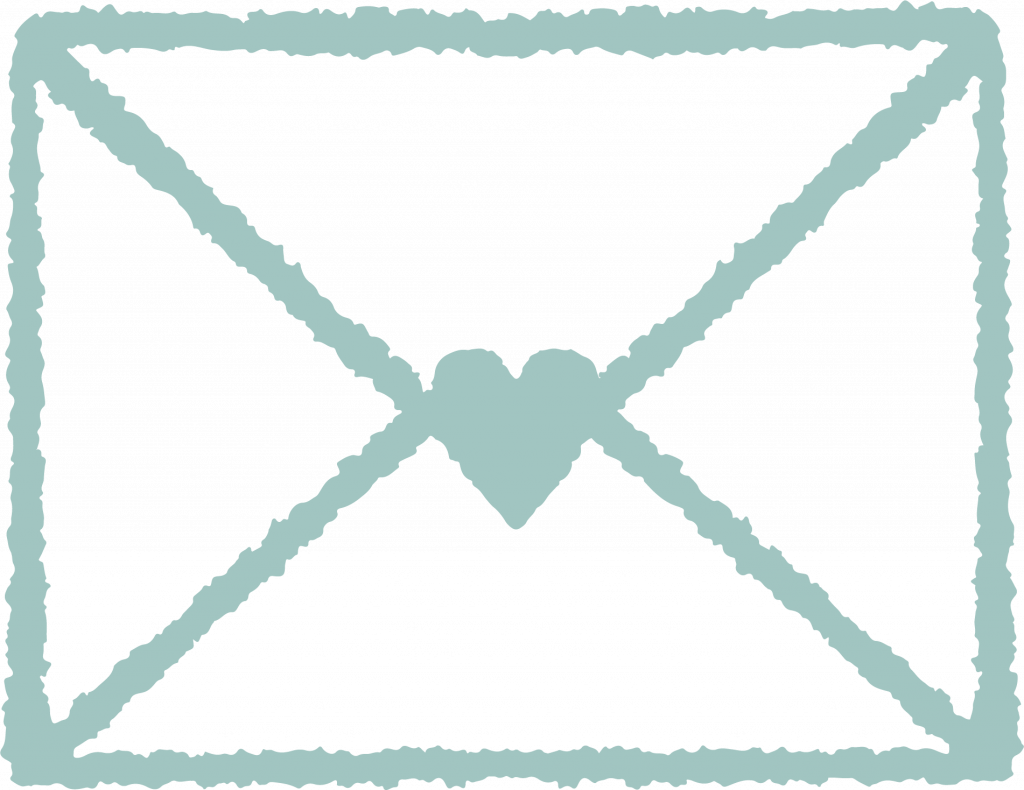
Got A Podcast Idea? Contact Us!
If you have a topic or question you’d love to hear our staff address on The Open Sanctuary Podcast, please get in touch via our contact form!
